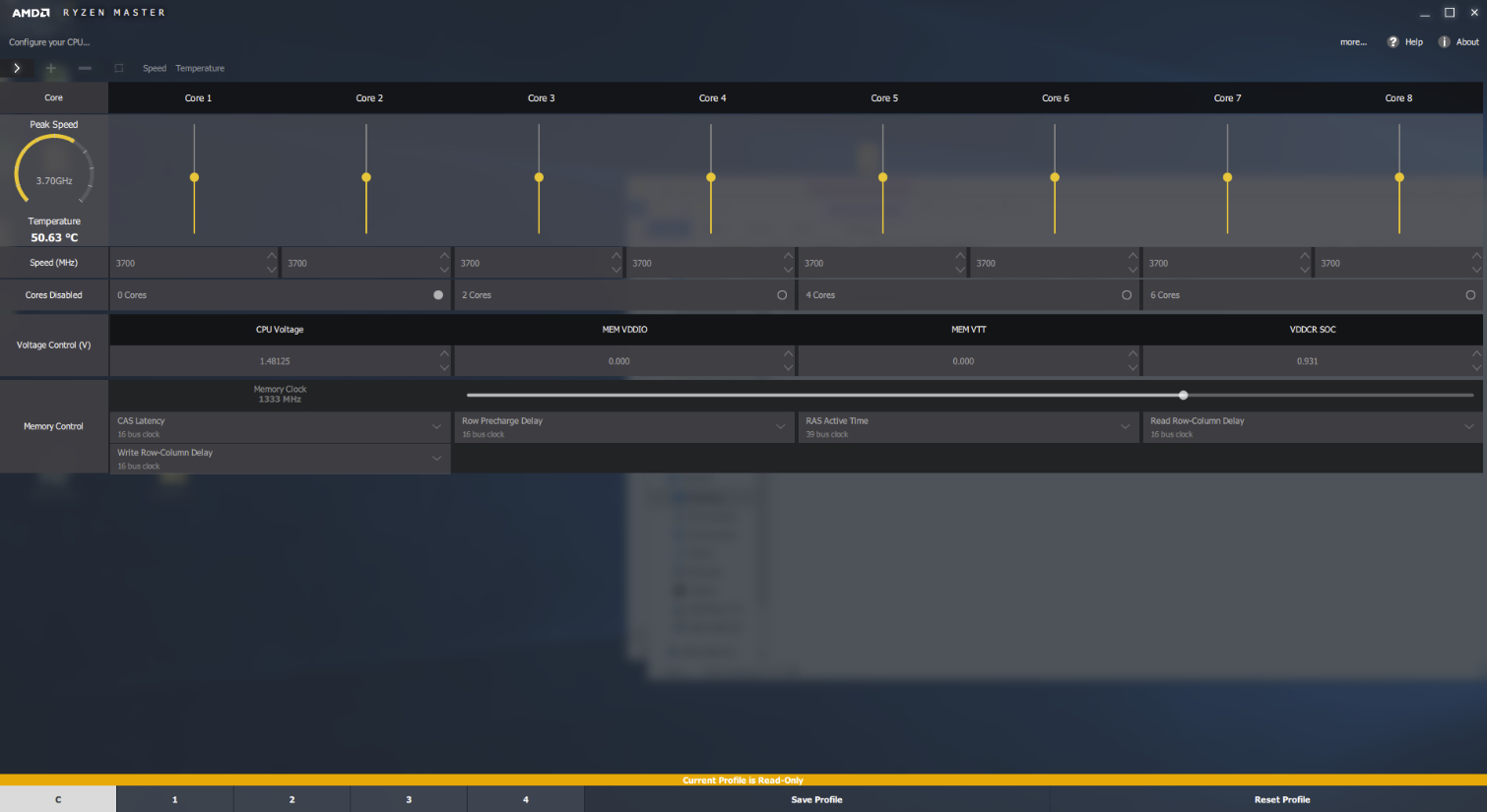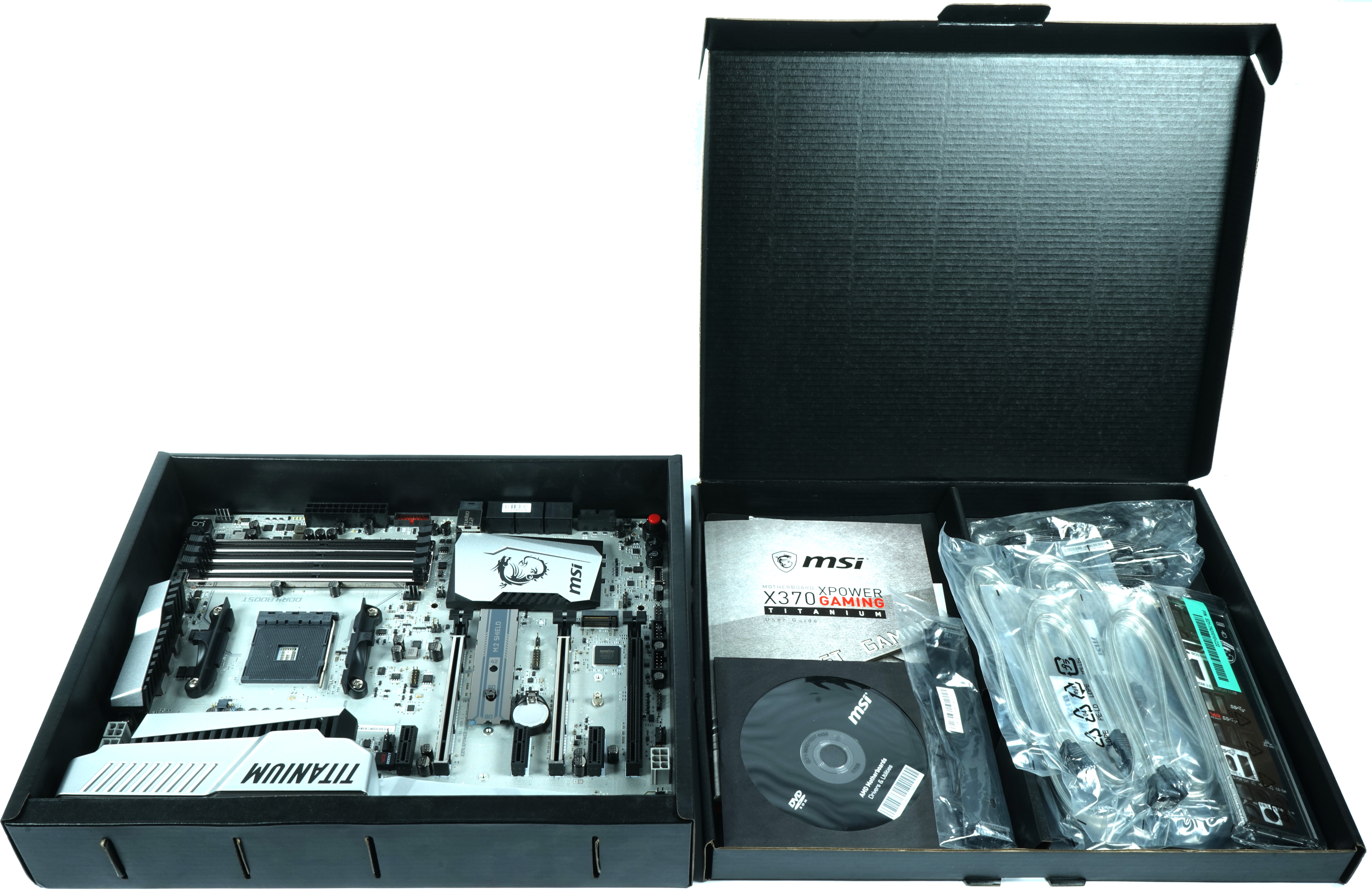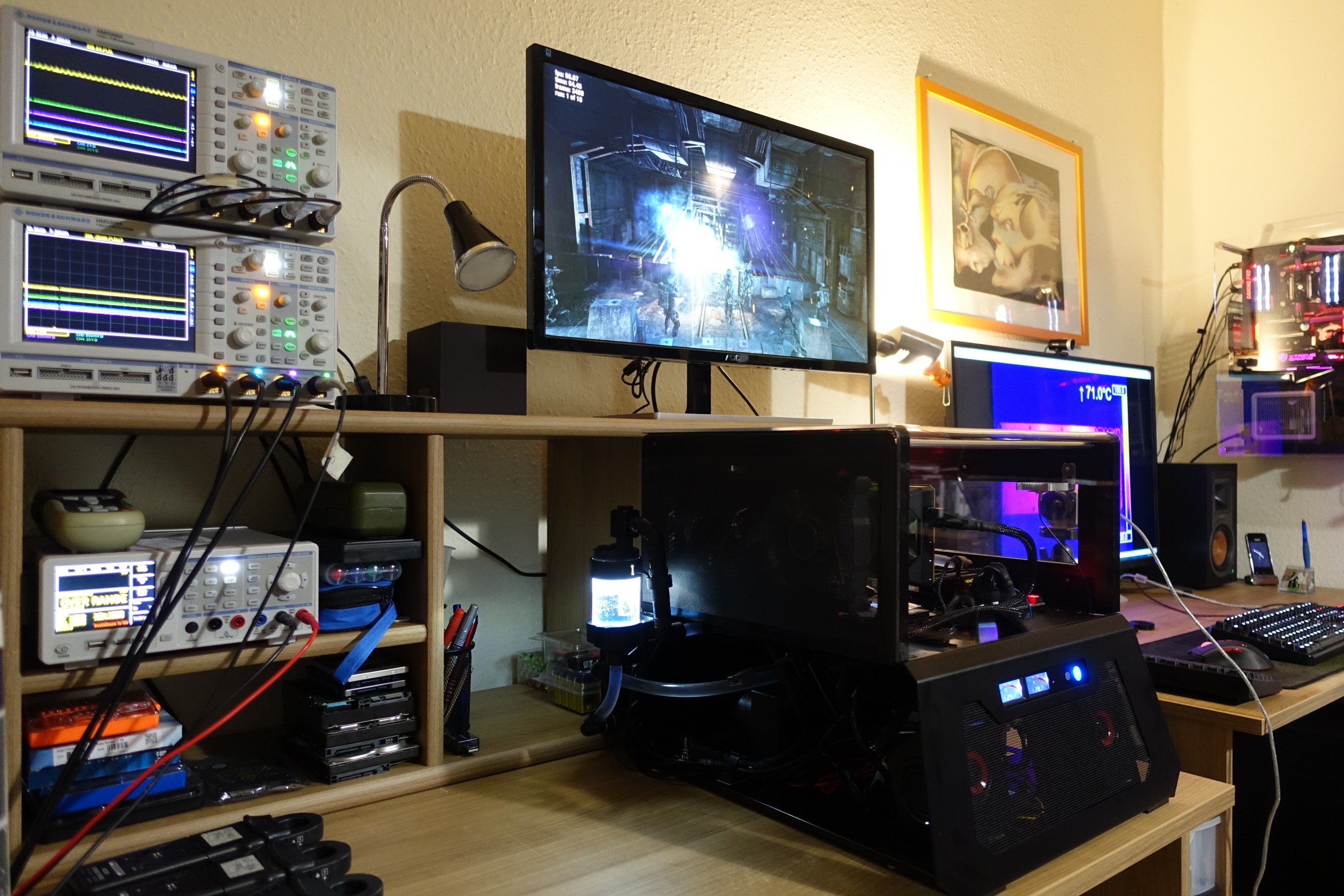AMD Ryzen 7 1800X CPU Review
Why you can trust Tom's Hardware
Overclocking & Test Setup
AMD Ryzen Master
AMD's Ryzen Master software allows you to tune a number of variables, such as the CPU's ratio multiplier, voltage, and memory speeds, from inside the operating system. When you open the utility, it warns you of the perils associated with overclocking and disavows AMD of responsibility should you inadvertently nuke your processor. When you adjust parameters, the CPU automatically switches into OC mode and disables all of the normal thermal and voltage restrictions.
You're able to disable cores in groups of two, which could help you hit more aggressive frequencies. Individual cores cannot be sped up or slowed down. Rather, adjustments apply to all cores.
It's worth noting that the older AMD Overdrive tool is not compatible with Ryzen CPUs.
We prefer overclocking from the motherboard firmware, though. Using simple multiplier and voltage adjustments, we achieved a Prime95-stable 4 GHz clock rate at 1.425V using Asus' Crosshair V Hero (that was with load-line calibration set to Auto). The highest temperature we saw was 82°C during our stress test.
Of course, if you're using a cooling solution less capable than our Corsair H100i v2 at its maximum fan/pump settings, overheating could become a problem. AMD predicts that most customers should see somewhere between 3.9 and 4.1 GHz across all cores, and suggests you stick with a 1.35V ceiling if you want your chip to last. Although core voltages in excess of 1.45V are considered sustainable, they'll have a more pronounced effect on longevity.
Asus notes that pushing memory transfer rates in excess of 2933 MT/s on its Crosshair VI Hero requires memory binned at 3200 MT/s or higher with Samsung A-die ICs. AMD hasn't opened up all of Ryzen's memory sub-timings yet, but we expect the company to open this up soon. Currently, Asus' testing with Hynix A-die ICs tops out at 3000 MT/s, but that may improve with microcode updates.
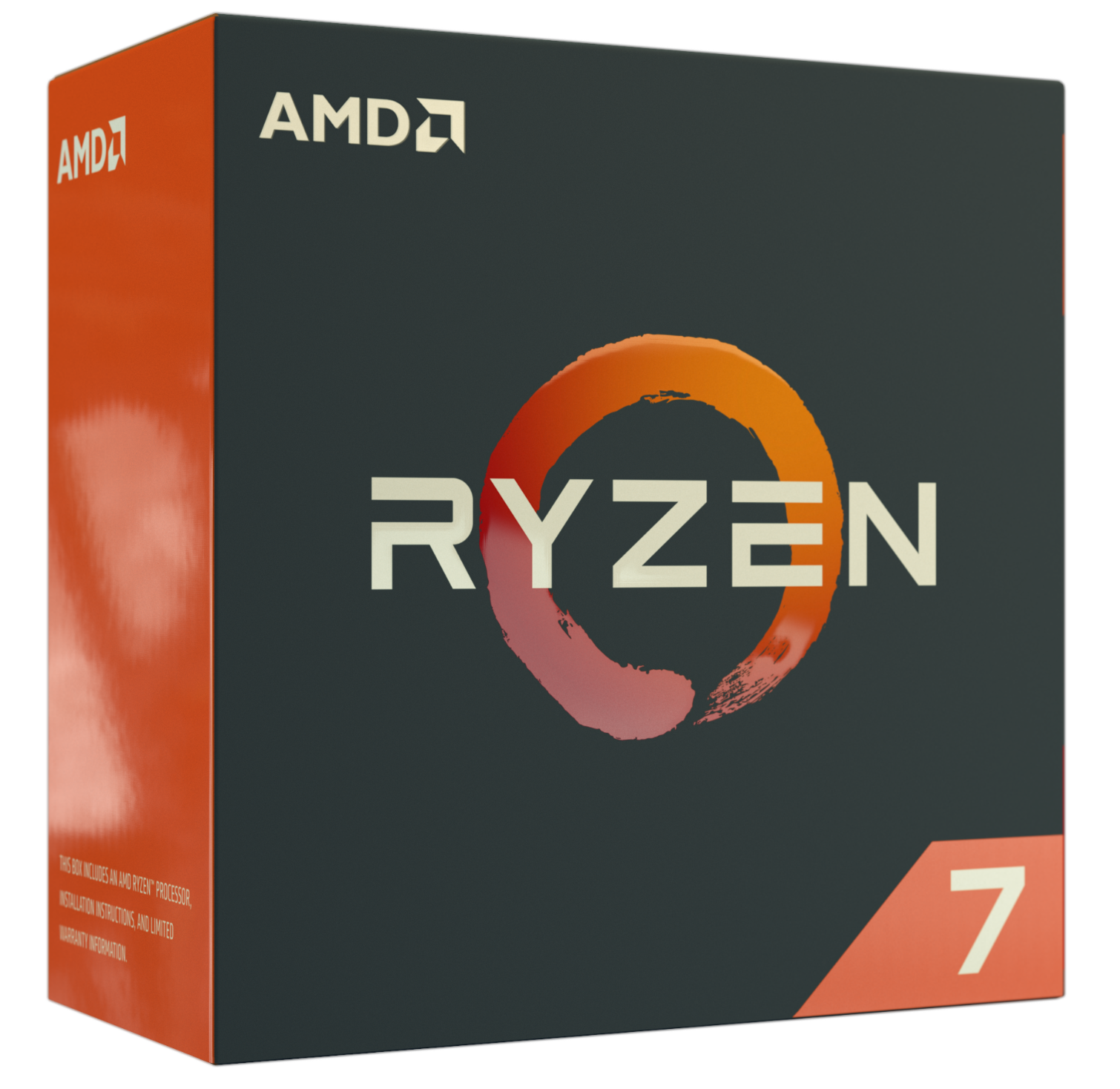
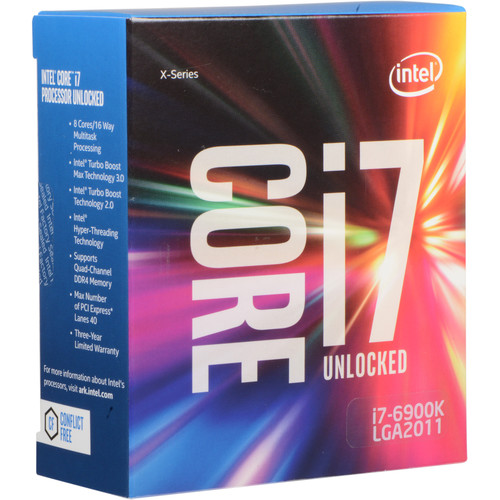

Measurement System and Methodologies
Splitting our tests between two locations proved difficult this time around, since AMD sent our German lab samples two days before the launch. We wanted to benchmark with retail hardware though, not downclocked engineering samples, so we raced the clock to crank out results.
Get Tom's Hardware's best news and in-depth reviews, straight to your inbox.
Our challenge was complicated by AMD's decision to send our labs two different motherboards. Germany received MSI's X370 XPower Gaming Titanium, so all of our workstation, HPC, and power consumption tests were run on that platform. Meanwhile, the U.S. team used Asus' Crosshair VI Hero and the EVGA GeForce GTX 1080 FE for graphics testing.
MSI’s X370 XPower Gaming Titanium, just like Asus’ model, is a flagship motherboard based on AMD's X370 chipset. We stuck with AMD’s recommended presets on both machines, minimizing issues attributable to our dissimilar boards. Our German office used two 8GB Corsair Vengeance LPX DDR4-2666 memory sticks and a custom water-cooling loop.
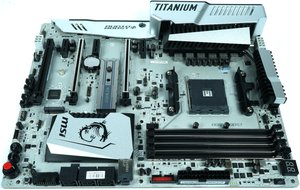
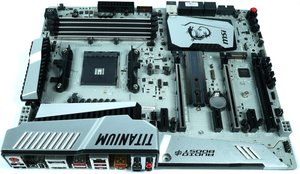
If you want to know more about how the Tom's Hardware DE system looks and is controlled, check out How We Test Graphics Cards.
To keep things simple, we present the highlights in the following table. The Intel systems are identical to those for the gaming tests.
| Test Systems and Measurement Setups | |
|---|---|
| Systems | Germany AMD 1Ryzen 7 1080XMSI RX370 XPower Gaming Titanium2x Corsair Vengeance LPX DDR4-2666Germany AMD 2AMD FX-9590Asus Crosshair Hero V2x Corsair Dominator Platinum DDR3 2133Germany All1x 1 TB Toshiba OCZ RD400 (M.2, System SSD)2x 960GB Toshiba OCZ TR150 (Storage, Images)be quiet Dark Power Pro 11, 850WWindows 10 Pro (All Updates)US AMD 1Ryzen 7 1800XASUS Crosshair VI Hero2x Corsair Vengeance LPX DDR4-2666US AMD 2AMD FX-8350MSI 970 Gaming2x Kingston HyperX DDR3 2133USA Intel 1Intel Core i7-7700KMSI Gaming M72x Corsair Vengeance LPX DDR4-2666USA Intel 2Core i7-6900KASRock Extreme44x Crucial DDR4 2400US All1TB Samsung PM863Silverstone ST1500, 1500WWindows 10 Pro (All Updates) Version 1607 |
| Cooling | Germany- Alphacool Eispumpe VPP755 Pump - Alphacool NexXxoS UT60 Full Copper 240mm- Alphacool Eisblock XPX CPU- 2x be quiet! Silent Wings 3 PWM- Thermal Grizzly Kryonaut US-Corsair H100iv2-Noctua NH-U12S SE-AM4-Arctic MX-4 |
| Case | Lian Li PC-T70 with Expansion Kit and Mods |
| Power Consumption Measurements | - Contact-free DC Measurement at PCIe Slot (Using a Riser Card) - Contact-free DC Measurement at External Auxiliary Power Supply Cable - Direct Voltage Measurement at Power Supply- 2 x Rohde & Schwarz HMO 3054, 500MHz Digital Multi-Channel Oscilloscope with Storage Function - 4 x Rohde & Schwarz HZO50 Current Probe (1mA - 30A, 100kHz, DC) - 4 x Rohde & Schwarz HZ355 (10:1 Probes, 500MHz) - 1 x Rohde & Schwarz HMC 8012 Digital Multimeter with Storage Function |
| Thermal Measurements | - 1 x Optris PI640 80Hz Infrared Camera- PI Connect Analysis Software with Profiles |
| Noise Measurements | - NTI Audio M2211 (with Calibration File)- Steinberg UR12 (with Phantom Power for Microphones)- Creative X7, Smaart v.7- Custom-Made Proprietary Measurement Chamber, 3.5 x 1.8 x 2.2m (L x D x H)- Perpendicular to Center of Noise Source(s), Measurement Distance of 50cm- Noise Level in dB(A) (Slow), Real-time Frequency Analyzer (RTA) - Graphical Frequency Spectrum of Noise |

Paul Alcorn is the Editor-in-Chief for Tom's Hardware US. He also writes news and reviews on CPUs, storage, and enterprise hardware.
-
vrumor Well, at the very least, it is competition. Competition drives innovation and lower costs. Well done AMD.Reply -
kiniku Why did I feel AMD was hiding something? Understandably the "gamer market" is comparatively small. But couldn't AMD have designed a CPU that worked well in gaming/desktops and in data centers? Disappointing.Reply
(But I have a 5820K. The best Ryzen in the world would not have had me switch anyway.) -
xryanx123 Bias review as always. Most of your information is obviously screwed up. How do you get 4.0ghz at 1.45v. When that's not even an overclock for the chip (not really at least compared to stock) yet you're already pushing 1.45v? You're tailoring your articles for the uneducated. Duck off tomsReply -
captaincharisma in the end the best anyone can hope from AMD is that it spooked intel enough to lower its pricesReply -
ssdpro In a hurry to compare various site's gaming results, it appears differing sites are finding the same thing: gaming performance is acceptable but below 4c/8t Intel offerings. If you spend your day encoding or multi-thread benching this is a monster bargain.Reply
With the good and bad, I think we can all agree the good here is competition. There is some now. -
Pompompaihn All along AMD was claiming to equal/beat Broadwell-E in comparative tasks at half the price, and from another review that included Broadwell-E, it's done that. I don't recall ANY AMD press saying it was going to beat the 7700K in straight up gaming. So, target set, and hit. That's a win in my book. But now, need to see what they can do with the smaller core count chips and if they can scale frequency to be competitive in the gaming sector.Reply -
Dionisiatis Maybe i missed it but i would love to see a perf/dollar ratio comparison. Im sure Ryzen would occupy the top position, and it would also make it clear that AMD achieved extraordinary results in bringing such high performance to the average consumer that cant 700+ dollars for a CPU.Reply -
jackspeed @Dionisiatis the 7700K is cheaper then the 1800X so for gamers it currently is the best CPU. now games have yet to optimize for the new AMD architecture, so maybe soon it will be a different story.Reply -
Aspiring techie Your "Heating up AMD Ryzen" video on the Power and Temperatures tab is still private. I can't watch it.Reply -
Fails in gaming, and for multitasking stuff i got Xeon 14/28 who is doing all that encoding and other stuff for $300 on eBay.Reply
In my opinion AMD failed and they really pulled BS by fooling people into pre ordering but it turns out that in gaming sucks..
